Spice Up Your Guitar Playing With Block Chords
by Simon Candy
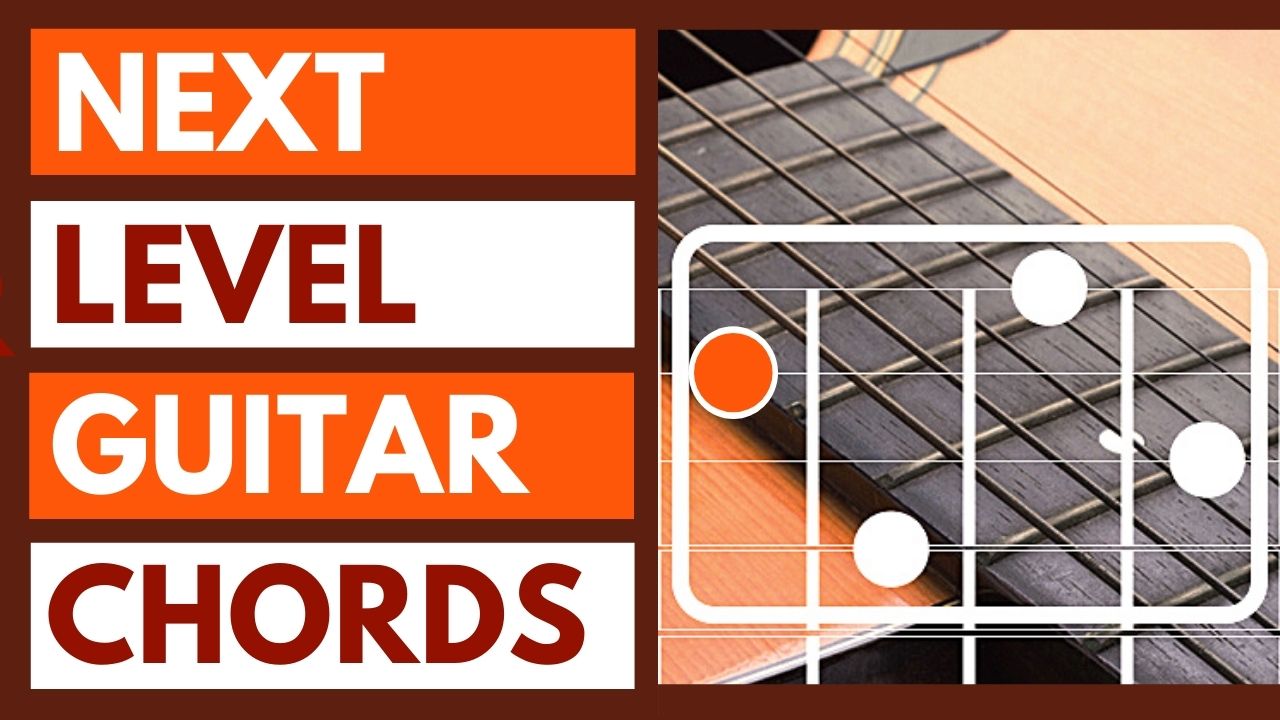 In this video, I am going to show you the next level of chords you should learn after the open and bar forms.
In this video, I am going to show you the next level of chords you should learn after the open and bar forms.
These chords are known as block chords and are great because they allow you to play the main chord types, major, minor, and dominant, all over the fretboard of your guitar.
They are advanced sounding chords, but not so hard to play when learned in the correct way, and can be applied to your guitar playing in almost endless ways.
And as a guitar player, it’s very common to be advanced in the area of soloing, yet not so much in the area of rhythm guitar and chords. Many guitar players can’t play anything outside of an open or bar chord, leaving very little to work with when it comes to rhythm guitar playing.
So what do you do once you get your open and bar chords down?
Well, don’t do what I did, which was not much for many years after learning the basic chord forms. That is, until I went to music college and was introduced to the true capabilities of the guitar as a harmonising instrument.
However, you don’t need to go to music college to learn that.
The first type of chord I was introduced to was the block chord.
This totally changed the way I approached the guitar as far as chords were concerned and totally opened up the fretboard to me.
With block chords, you will be able to play all the main chord types of major, minor, and dominant all over your fretboard. They will bring much variety to your rhythm guitar playing enabling you to do so much more than simply using open and bar chords all the time, which becomes very boring and mundane to do .
In this lesson, I show you the block chord form as a dominant chord. You will learn the 4 main shapes for the dominant 7th block chord up and down your fretboard before connecting these shapes together to create some cool sounding chord vamps in the style of guitar greats such as Wes Montgomery, George Benson, and Joe Pass.
You also learn the very best ways to train the block chord form into your own playing so you can use it with ease.
You learn how to train the block by shape and by position. Combined, these two training methods will allow you to access the block chord form all over the fretboard.
Finally, you will put everything together to create a blues in E using the block chord shapes you have learned. I show you how to sound full and complete doing this on one guitar, with many variations at your fingertips thanks to the block chord form.
Check out the video below to learn all about block chords and how to get these into your guitar playing:
Block Chord Video Content
Block Chord E7 Diagrams:
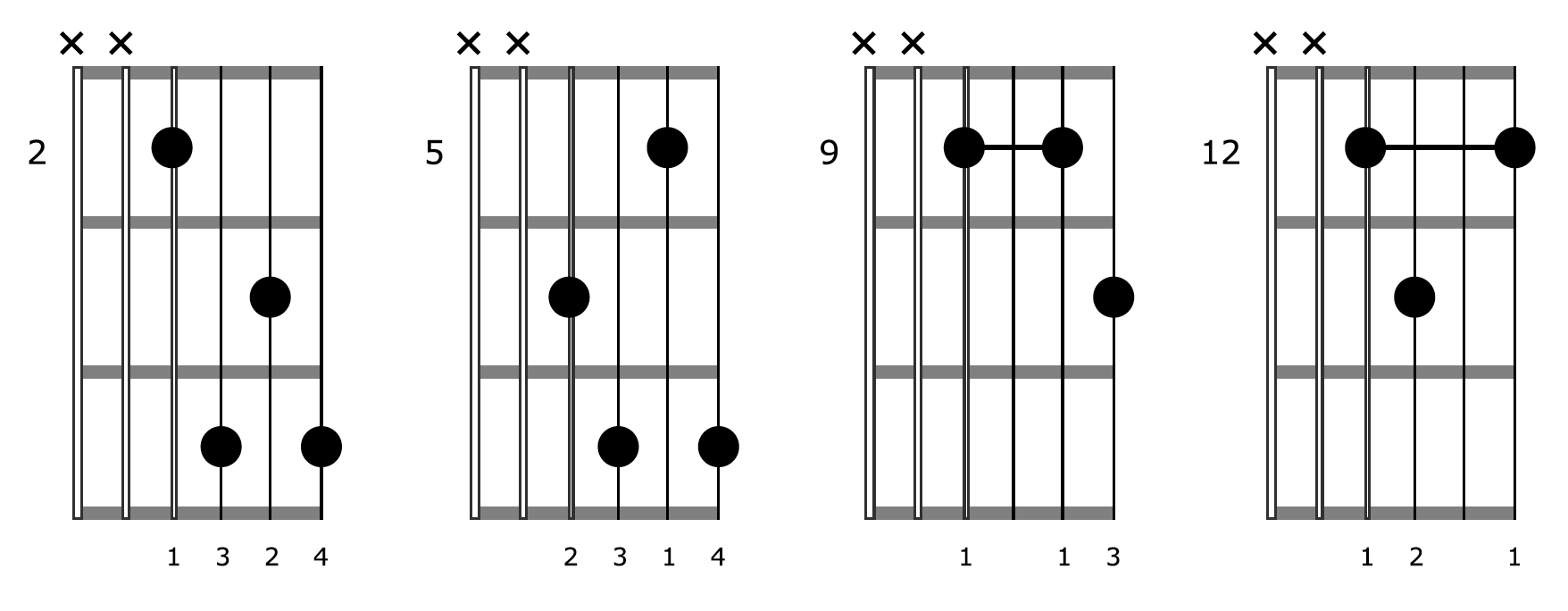
Block Chord A7 Diagrams:
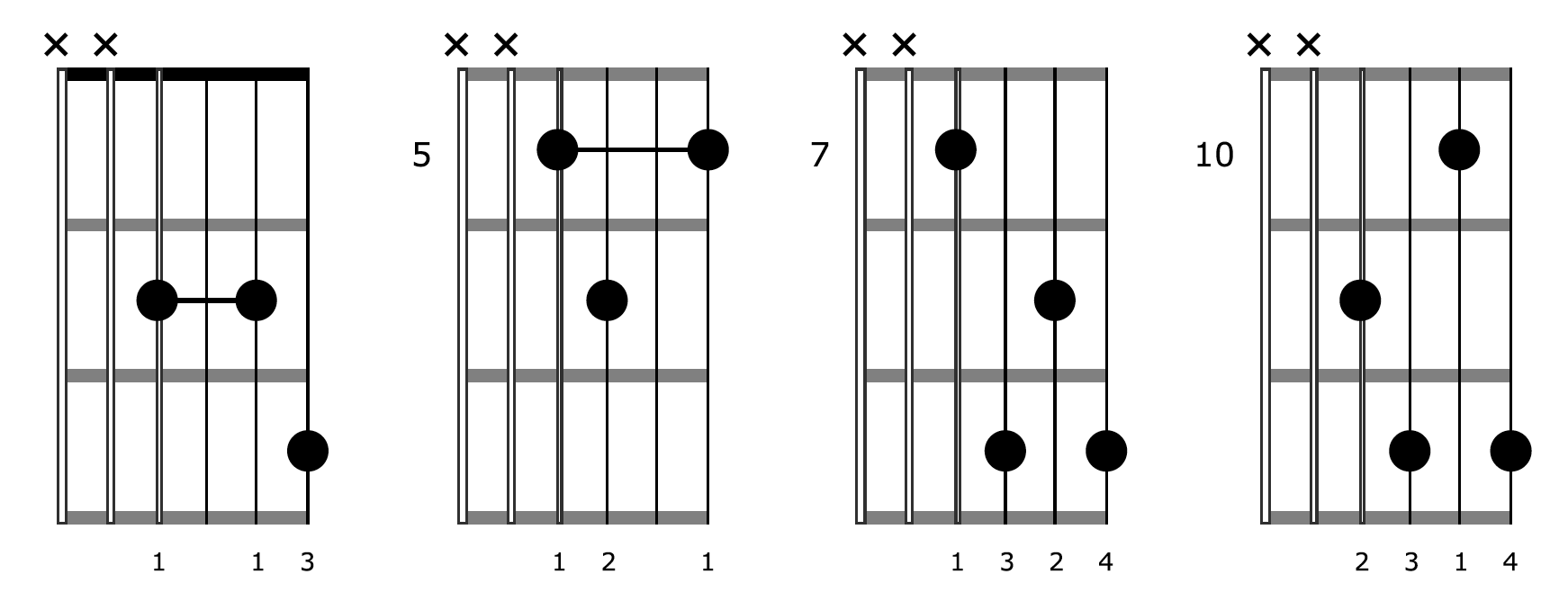
Block Chord Vamp By Shape:
1.
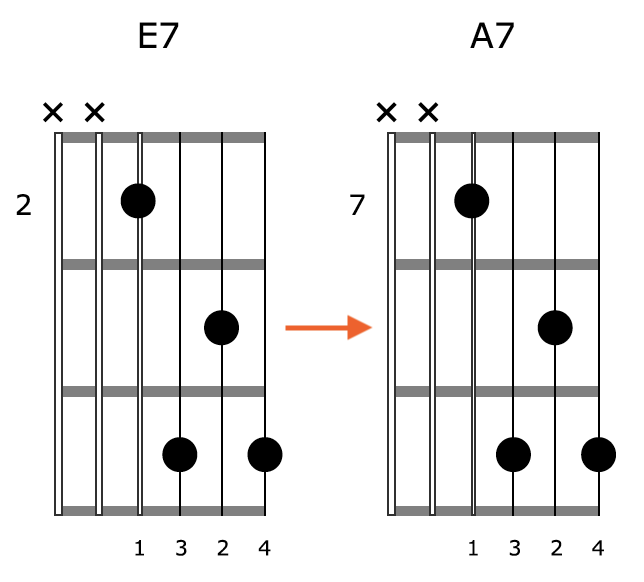
2.
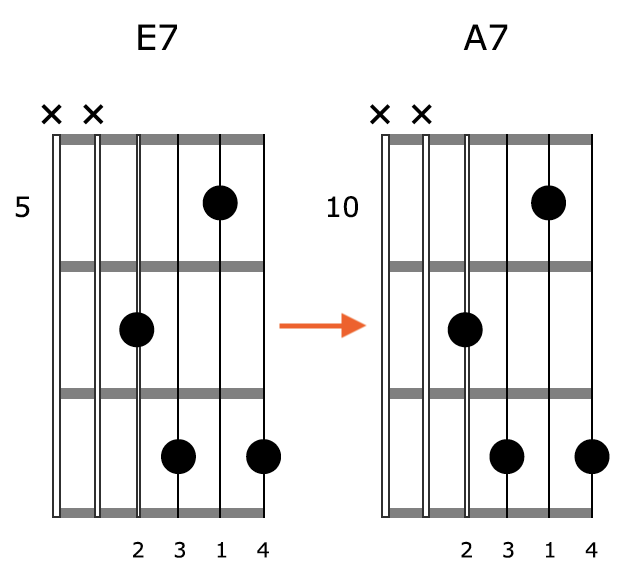
3.
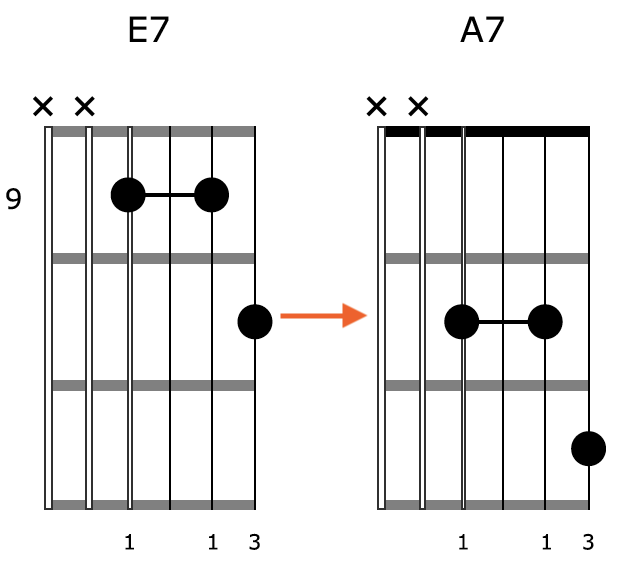
4.
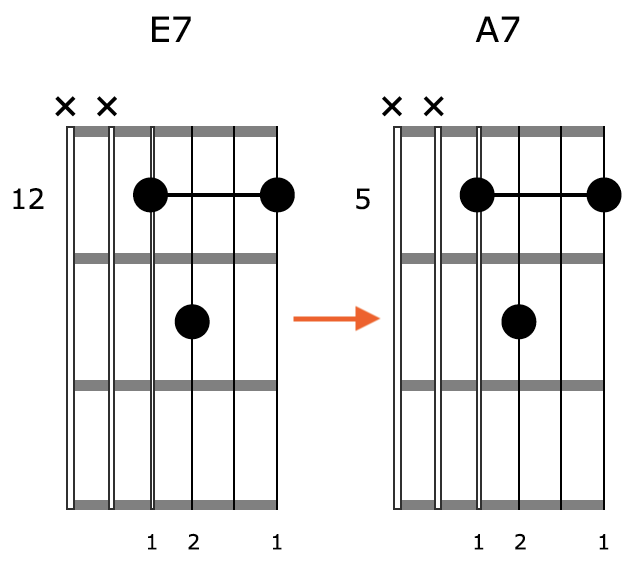
Block Chord Vamp By Position:
1.
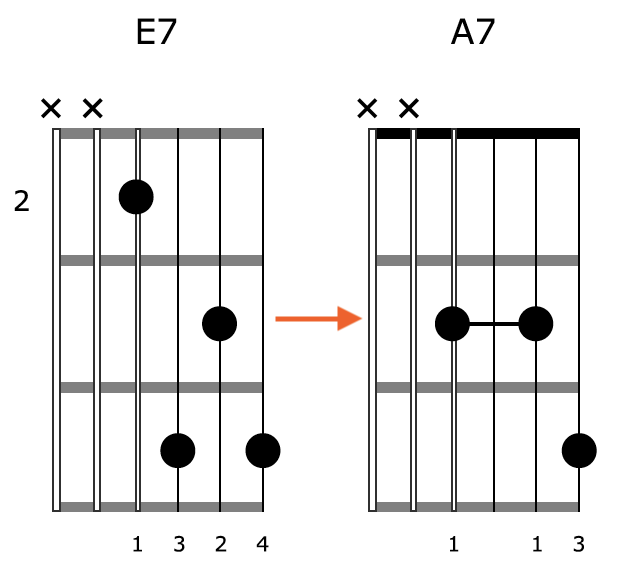
2.
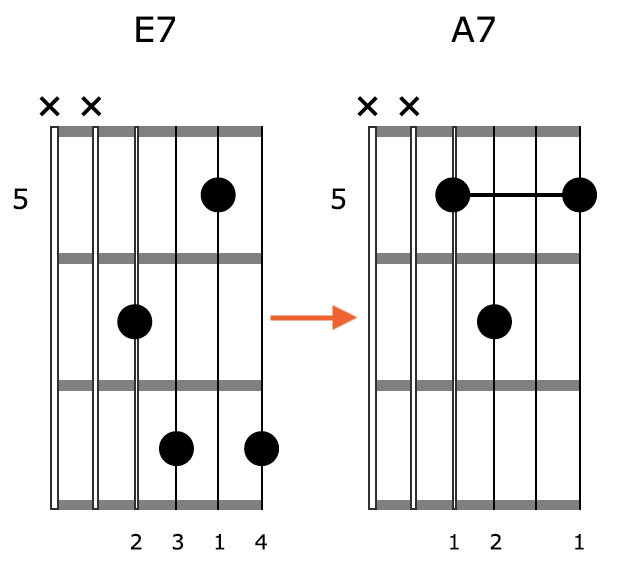
3.
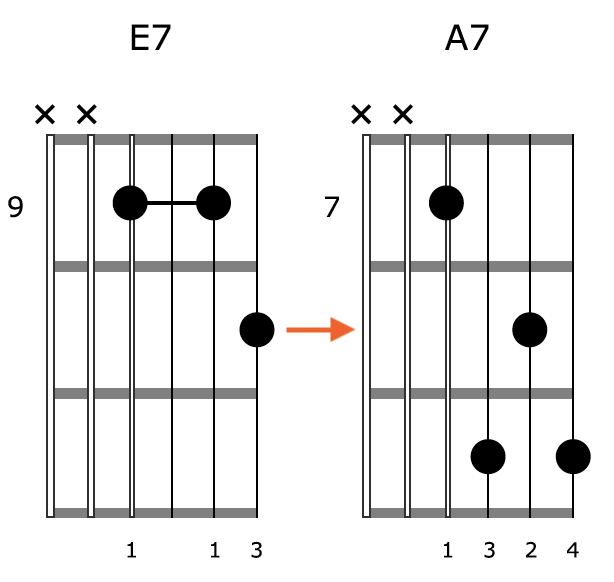
4.
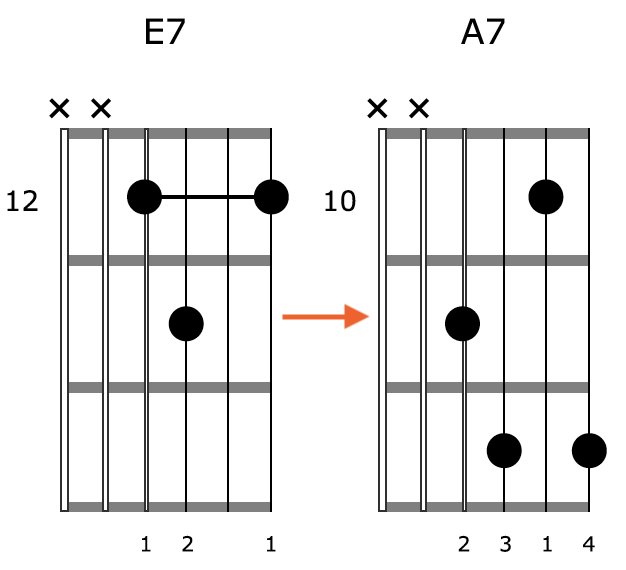
Block Chord E Blues Etude:

Learn more ways to visualise, play, and create with Block Chords on your guitar